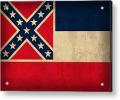Hey I don't mean to beat a dead horse. But I recently spoke to an advanced collector of M1903s.
Now I don't want to get into the safe vs safe. Debate because that's a bit over done...
But while talking with this gentleman he brought up a very thought provoking point.
We all know the numbers of rifles produced as well as how many documented receiver failures there were documented in various sources including Hatcher's notebook.
Wouldn't there be a good cause to politically blow up this issue before the public in the WWI post war years? Typically during peacetime, especially following a war the military sees a significant reduction in funding for their budget due to the need the threat of war has been removed.
If you want to maintain your war production capabilities and justify funding in the post war peacetime era, how do you justify it to the Congressmen and Senators? You create a problem, crisis that needs immediate attention....
You need to completely revamp the whole production process which is going to require tooling, personnel, training and most importantly a non-stripped budget. So that way you don't lose your factory and workers.
Now I don't know if this is a dated argument or been done before. I haven't heard it before. But everything in government goes back to money. Could this LN debate been started by the War Department trying to hang onto its budget when the Armistice was signed?
I thought it was a thought provoking argument, I'm don't know if it holds water.



 Reply With Quote
Reply With Quote




